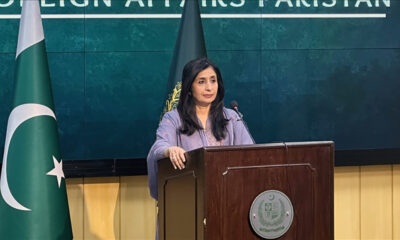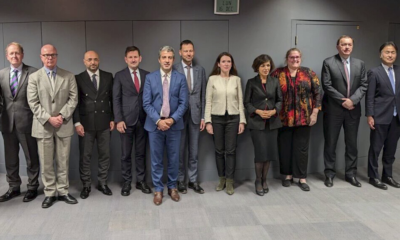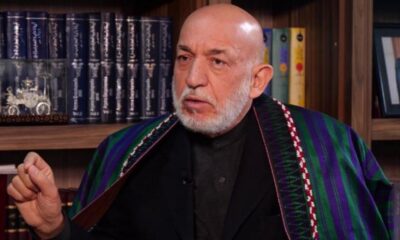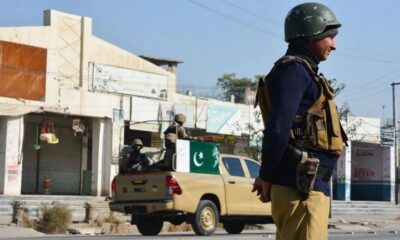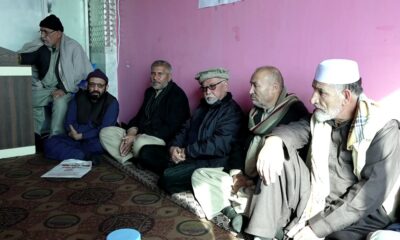World
North Korea shows first photos of banned uranium enrichment site
The photos showed Kim walking between long rows of metal centrifuges, the machines that enrich uranium. The report did not make clear when the visit occurred nor the facility’s location.

North Korea for the first time showed images of the centrifuges that produce fuel for its nuclear bombs on Friday, as leader Kim Jong Un visited a uranium enrichment facility and called for more weapons-grade material to boost the arsenal.
The state media report on Kim's visit to the Nuclear Weapons Institute and a production base for weapon-grade nuclear materials was accompanied by the first photos of the centrifuges, providing a rare look inside North Korea's nuclear programme, which is banned under multiple United Nations Security Council resolutions, Reuters reported.
The photos showed Kim walking between long rows of metal centrifuges, the machines that enrich uranium. The report did not make clear when the visit occurred nor the facility's location.
Kim urged workers to produce more materials for tactical nuclear weapons, saying the country's nuclear arsenal is vital for confronting threats from the United States and its allies.
The weapons are needed for "self-defence and the capability for a preemptive attack," he said.
The North Korean leader said "anti-DPRK nuclear threats" from the "U.S. imperialists-led vassal forces" have crossed the red-line, according to the report.
South Korea condemned North Korea's unveiling of its uranium enrichment facility and will never accept Pyongyang's possession of nuclear weapons, the South's unification ministry said.
North Korea is believed to have several sites for enriching uranium. Analysts say commercial satellite imagery has shown construction in recent years at the main Yongbyon Nuclear Scientific Research Center, including its uranium enrichment plant, suggesting possible expansion.
Uranium is a radioactive element that exists naturally. To make nuclear fuel, raw uranium undergoes processes that result in a material with an increased concentration of the isotope uranium-235.
International Atomic Energy Agency chief Rafael Grossi said on Monday that the U.N. nuclear watchdog had observed activity consistent with the operation of a reactor and the reported centrifuge enrichment facility at Yongbyon.
NEW CENTRIFUGES
Kim stressed the need to boost the number of centrifuges so as to "exponentially increase" North Korea's nuclear arsenal, and expand the use of a new type of centrifuge to strengthen the production of weapon-grade nuclear materials.
The centrifuges seen in the photos appear smaller and shorter than the types previously believed to be used by North Korea, suggesting it had developed its own centrifuges to enhance separation capabilities, said Lee Sang-kyu, a nuclear engineering expert at South Korea's Korea Institute for Defense Analysis.
The photos also confirmed that the North is using a cascade system where large numbers of centrifuges are interconnected to achieve highly enriched uranium, he added.
The new type of centrifuge shows North Korea is advancing its fuel cycle capabilities, said Ankit Panda of the U.S.-based Carnegie Endowment for International Peace.
"Kim also appears to suggest that North Korean tactical nuclear weapons designs may primarily rely on uranium for their cores," he said.
This is notable because North Korea is more able to scale up its highly enriched uranium stockpiles, Panda said, compared to the more complicated process for plutonium.
'INCREASING ARSENALS'
North Korea invited some foreign scientists to view a centrifuge facility at Yongbyon in 2010, but Jenny Town of the U.S.-based Stimson Center said Friday's report is the first and only photographs of the equipment.
"It shows how advanced their enrichment capability has become, which gives greater credibility to both their ability and commitment to increasing their nuclear weapons arsenals," she said.
It could also be meant to influence the U.S. election and send a message to the next administration that denuclearisation is no longer possible and it should recognise North Korea as a nuclear state, said Hong Min, a senior researcher at the Korea Institute for National Unification in Seoul.
North Korea has previously shown photos of what it says were nuclear warheads. It has conducted six underground nuclear tests between 2006 and 2017.
Estimates of the number of North Korean nuclear weapons varies widely. In July a report by the Federation of American Scientists concluded that the country may have produced enough fissile material to build up to 90 nuclear warheads, but that it has likely assembled closer to 50.
Kim also oversaw the test launch of a new 600mm multiple launch rocket system on Thursday and visited an army training base on Wednesday, according to separate KCNA reports.
World
Biden approves $571 mln in defense support for Taiwan

U.S. President Joe Biden on Friday agreed to provide $571.3 million in defense support for Taiwan, the White House said, while the State Department approved the potential sale to the island of $265 million worth of military equipment.
The United States is bound by law to provide Chinese-claimed Taiwan with the means to defend itself despite the lack of formal diplomatic ties between Washington and Taipei, to the constant anger of Beijing, Reuters reported.
Democratically governed Taiwan rejects China's claims of sovereignty.
China has stepped up military pressure against Taiwan, including daily military activities near the island and two rounds of war games this year.
Taiwan went on alert last week in response to what it said was China's largest massing of naval forces in three decades around Taiwan and in the East and South China Seas.
Biden had delegated to the secretary of state the authority "to direct the drawdown of up to $571.3 million in defense articles and services of the Department of Defense, and military education and training, to provide assistance to Taiwan," the White House said in a statement without providing details.
Taiwan's defense ministry thanked the United States for its "firm security guarantee", saying in a statement the two sides would continue to work closely on security issues to ensure peace in the Taiwan Strait.
The Pentagon said the State Department had approved the potential sale to Taiwan of about $265 million worth of command, control, communications, and computer modernization equipment.
Taiwan's defense ministry said the equipment sale would help upgrade its command-and-control systems.
Taiwan's defense ministry also said on Saturday that the U.S. government had approved $30 million of parts for 76 mm autocannon, which it said would boost the island's capacity to counter China's "grey-zone" warfare.
World
Trump-backed spending deal fails in House, shutdown approaches

A spending bill backed by Donald Trump failed in the U.S. House of Representatives on Thursday as dozens of Republicans defied the president-elect, leaving Congress with no clear plan to avert a fast-approaching government shutdown that could disrupt Christmas travel.
The vote laid bare fault lines in Trump's Republican Party that could surface again next year when they control the White House and both chambers of Congress, Reuters reported.
Trump had pressured lawmakers to tie up loose ends before he takes office on Jan. 20, but members of the party's right flank refused to support a package that would increase spending and clear the way for a plan that would add trillions more to the federal government's $36 trillion in debt.
"I am absolutely sickened by a party that campaigns on fiscal responsibility and has the temerity to go to the American people and say you think this is fiscally responsible," said Republican Representative Chip Roy, one of 38 Republicans who voted against the bill.
The package failed by a vote of 174-235 just hours after it was hastily assembled by Republican leaders seeking to comply with Trump's demands. A prior bipartisan deal was scuttled after Trump and the world's richest person Elon Musk came out against it on Wednesday.
Republican House Speaker Mike Johnson provided no details when reporters asked him about next steps after the failed vote.
"We will come up with another solution," he said.
Government funding is due to expire at midnight on Friday. If lawmakers fail to extend that deadline, the U.S. government will begin a partial shutdown that would interrupt funding for everything from border enforcement to national parks and cut off paychecks for more than 2 million federal workers. The U.S. Transportation Security Administration warned that travelers during the busy holiday season could face long lines at airports.
"Congress must get rid of, or extend out to, perhaps, 2029, the ridiculous Debt Ceiling. Without this, we should never make a deal," Trump said in a post on Truth Social hours after the bill failed.
Thursday's unsuccessful bill largely resembled the earlier version that Musk and Trump had blasted as a wasteful giveaway to Democrats. It would have extended government funding into March and provided $100 billion in disaster relief and suspended the debt. Republicans dropped other elements that had been included in the original package, such as a pay raise for lawmakers and new rules for pharmacy benefit managers.
At Trump's urging, the new version also would have suspended limits on the national debt for two years -- a maneuver that would make it easier to pass the dramatic tax cuts he has promised.
Johnson before the vote told reporters that the package would avoid disruption, tie up loose ends and make it easier for lawmakers to cut spending by hundreds of billions of dollars when Trump takes office next year.
"Government is too big, it does too many things, and it does few things well," he said.
TEEING UP TAX CUT
Democrats blasted the bill as a cover for a budget-busting tax cut that would largely benefit wealthy backers such as Musk, the world's richest person, while saddling the country with trillions of dollars in additional debt.
"How dare you lecture America about fiscal responsibility, ever?" House Democratic Leader Hakeem Jeffries said during floor debate.
Even if the bill had passed the House, it would have faced long odds in the Senate, which is currently controlled by Democrats. The White House said Democratic President Joe Biden did not support it.
Previous fights over the debt ceiling have spooked financial markets, as a U.S. government default would send credit shocks around the world. The limit has been suspended under an agreement that technically expires on Jan. 1, though lawmakers likely will not have to tackle the issue before the spring.
When he returns to office, Trump aims to enact tax cuts that could reduce revenues by $8 trillion over 10 years, which would drive the debt higher without offsetting spending cuts. He has vowed not to reduce retirement and health benefits for seniors that make up a vast chunk of the budget and are projected to grow dramatically in the years to come.
The last government shutdown took place in December 2018 and January 2019 during Trump's first White House term.
The unrest also threatened to topple Johnson, a mild-mannered Louisianan who was thrust unexpectedly into the speaker's office last year after the party's right flank voted out then-Speaker Kevin McCarthy over a government funding bill. Johnson has repeatedly had to turn to Democrats for help in passing legislation when he has been unable to deliver the votes from his own party.
He tried the same maneuver on Thursday, but this time fell short.
Several Republicans said they would not vote for Johnson as speaker when Congress returns in January, potentially setting up another tumultuous leadership battle in the weeks before Trump takes office.
World
North Korean troops suffer 100 deaths, struggling in drone warfare, South Korea says
More than 10,000 North Korean troops have been deployed to help Russia in the war, according to U.S. and South Korean officials.
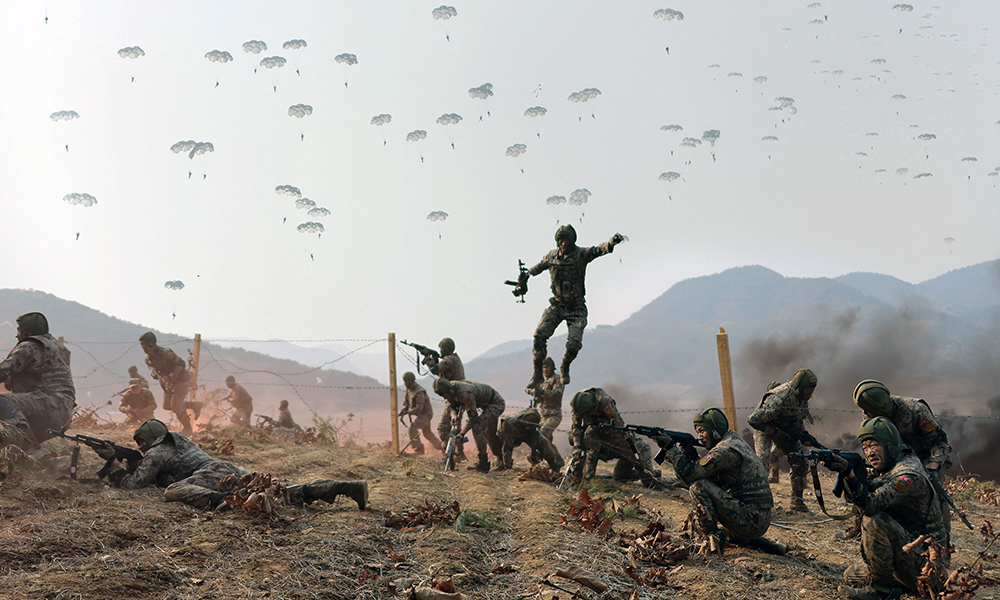
At least 100 North Korean troops deployed to Russia have been killed with another 1,000 injured in combat against Ukrainian forces in intense fighting in the Kursk region, Reuters cited a South Korean lawmaker said on Thursday citing the country's spy agency.
The heavy losses are attributed to the lack of experience by North Korean troops in drone warfare and unfamiliarity with the open terrain where they are taking part in the battle, a member of parliament Lee Seong-kweun told reporters.
Lee was speaking after a closed-door briefing by the National Intelligence Service (NIS) to parliament.
The discrepancy in the estimate of the troops killed from that made by a U.S. military official who cited several hundred casualties is because of the relatively conservative analysis by the NIS, Lee said.
"There was a report that there have been at least 100 deaths and the injured are approaching 1,000," he said.
There are indications that the North is preparing for additional deployment, Lee said, including intelligence of the country's leader Kim Jong Un overseeing training, read the report.
The report echoed comments by U.S. and Ukrainian officials that North Korean losses are heavy and that Russia was using them in large numbers in assaults in Kursk, a Russian region where Ukraine launched a cross-border incursion in August.
More than 10,000 North Korean troops have been deployed to help Russia in the war, according to U.S. and South Korean officials. Pyongyang has also shipped more than 10,000 containers of artillery rounds, anti-tank rockets as well as mechanised howitzers and rocket launchers.
Neither the North nor Russia have officially acknowledged the troop deployment or the weapons supply.
Russian President Vladimir Putin visited Pyongyang in June and signed a "comprehensive strategic partnership" treaty with North Korean leader Kim Jong Un that included a mutual defence pact.
Earlier on Thursday, North Korea said its military alliance with Russia is proving "very effective" in deterring the United States and its "vassal forces," denouncing a recent statement by Washington and allies against ties between Pyongyang and Moscow, Reuters reported.
North Korea made no mention of its involvement in the war in Ukraine or casualties.
Instead it denounced a statement by the United States and nine countries and the European Union issued on Monday as "distorting and slandering the essence of the normal cooperative relations" between the North and Russia.
In a statement by an unnamed foreign ministry spokesman, the North blamed Washington and its allies for prolonging the Ukrainian war and destabilising the security situation in Europe and Asia-Pacific.
"It is because of the misguided acts of the U.S. and the West persisting in their structure-destructive, hegemony-oriented and adventuristic military policy," it said.
-
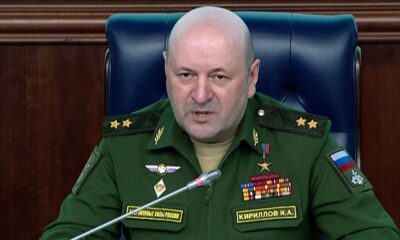
 Regional5 days ago
Regional5 days agoBomb kills chief of Russian nuclear protection forces in Moscow
-

 Sport5 days ago
Sport5 days agoATN once again seals deal to broadcast upcoming IPL across Afghanistan
-
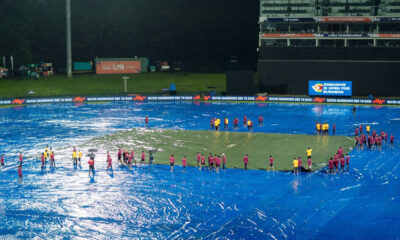
 Sport5 days ago
Sport5 days agoLanka T10: All three matches abandoned due to rain
-
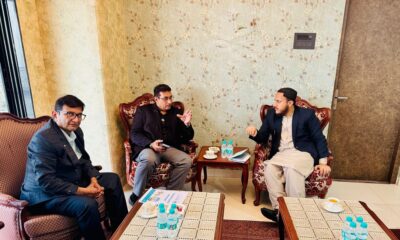
 Latest News5 days ago
Latest News5 days agoIndia hoping to import coal and marble from Afghanistan
-
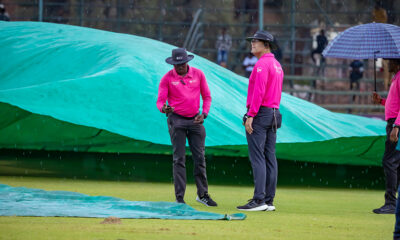
 Sport4 days ago
Sport4 days agoZimbabwe’s opening ODI against Afghanistan abandoned
-
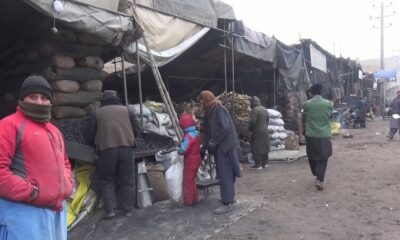
 Latest News5 days ago
Latest News5 days agoFuel prices rise in Herat as winter approaches
-
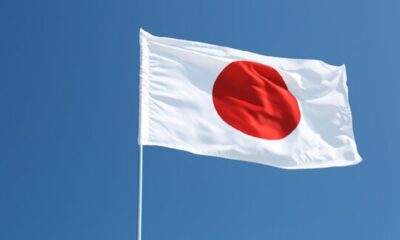
 Latest News5 days ago
Latest News5 days agoJapan announces $27.5 million aid package to Afghanistan
-
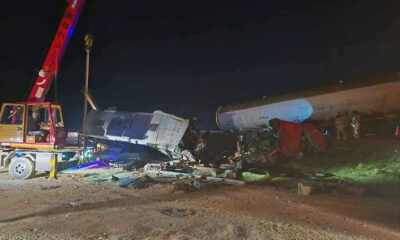
 Latest News3 days ago
Latest News3 days agoTwo horror accidents on Kabul-Kandahar highway leave 52 dead


